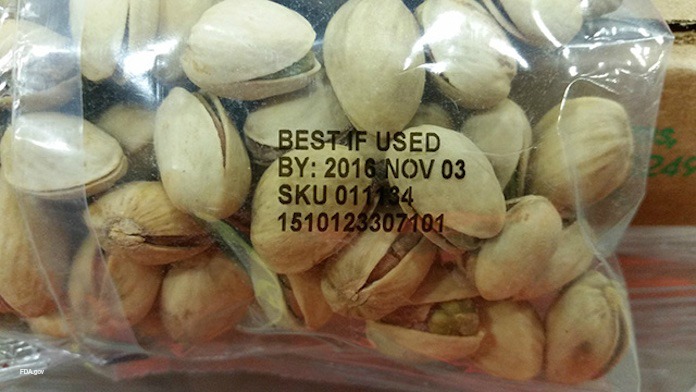In the ninth largest food poisoning outbreak of 2016, Wonderful Pistachios sickened 11 people with two serotypes of Salmonella bacteria. That outbreak ended in May of 2016. Nine of those patients were sickened with Salmonella Montevideo and two were sickened with Salmonella Senftenberg.

The case count by state was: Connecticut (1), Georgia (1), Maryland (1), Michigan (2), Minnesota (1), North Dakota (1), New York (1), Virginia (1), and Washington (2). Illnesses started on dates ranging from January 3, 2016 to March 25, 206. Patients ranged in age from 27 years to 69. Among eight people who were interviewed in this outbreak, two were hospitalized.
The pistachios were sold under the brand names Wonderful, Paramount Farms, and Trader Joe’s. They were sold in the U.S. and in Canada, Mexico, and Peru.
Investigations showed that pistachios produced by Wonderful Pistachios were the likely source of this outbreak. That company recalled some of their in-shell and shelled pistachios on March 9, 2016.
Public health officials used the PulseNet system to find people sickened in this outbreak. That facility performs DNA fingerprinting on Salmonella bacteria using pulsed field-gel electrophoresis (PFGE) and whole genome sequencing (WGS).
Of the 10 people who were interviewed, 8, or 80%, reporting eating pistachios the week before they got sick. And when asked about the brand name, five of the eight patients reported eating Wonderful brand pistachios.
Salmonella Montevideo and Salmonella Senftenberg bacteria were found in lab tests conducted on samples of raw pistachios collected from Paramount Farms, where Wonderful brand pistachios are grown. Testing found that isolates of Salmonella Montevideo from ill people were closely related genetically to the bacteria found on the pistachios.
And FDA inspectors took samples from Paramount Farms and found isolates of Salmonella Senftenberg. Paramount Farms voluntarily closed the production facility where the bacteria were found.
The symptoms of a Salmonella infection include nausea, vomiting, abdominal pain, diarrhea that may be bloody, fever, chills, headache, and muscle pains. These symptoms usually start six to seventy-two hours after exposure to the bacteria. Most people recover on their own, but some become so ill they must be hospitalized.
These recalled products may still be in people’s homes. If you purchased pistachios during the last year, check your pantry to make sure you do not have any of these recalled items. If you do, throw them away or return them to the place of purchase for a refund.




